Priority Climate Action Plan
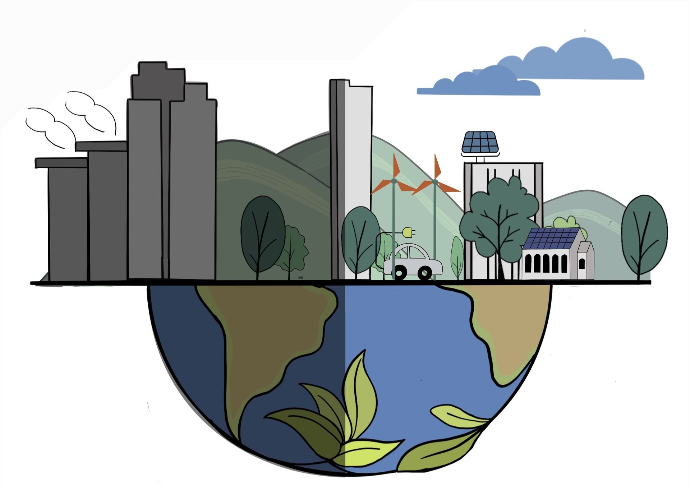
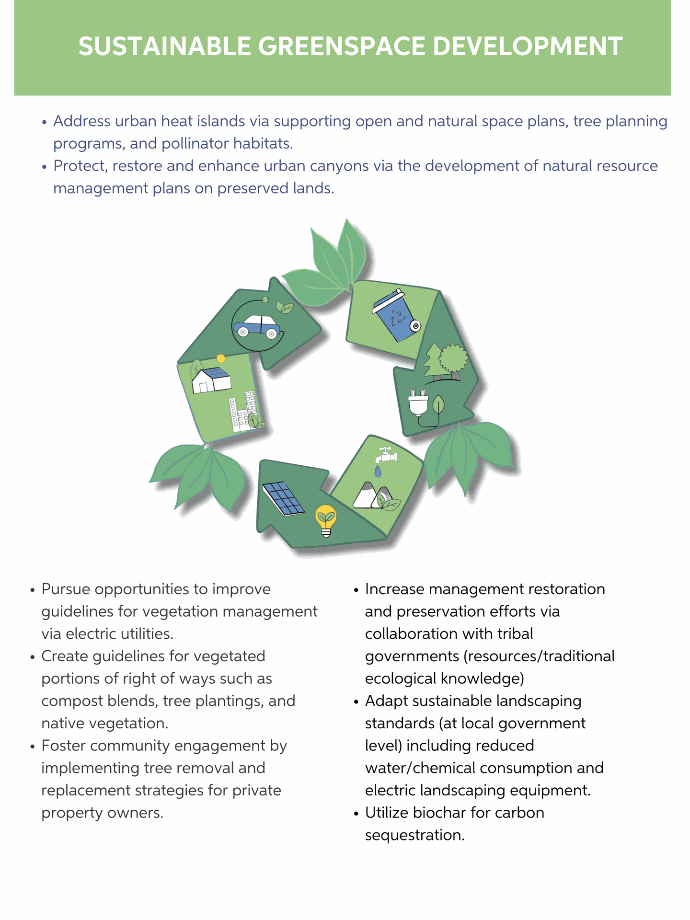
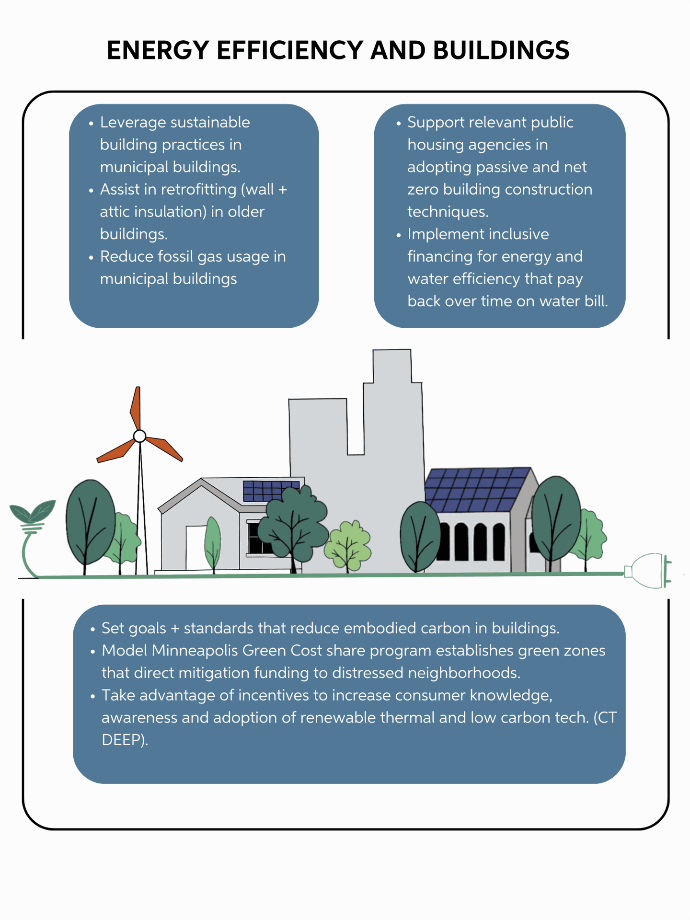
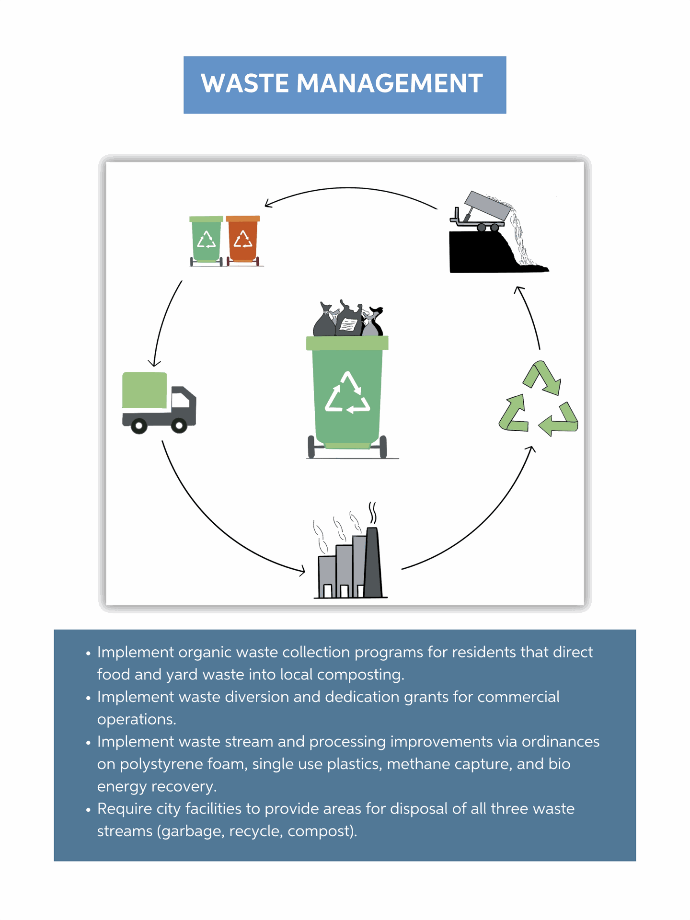
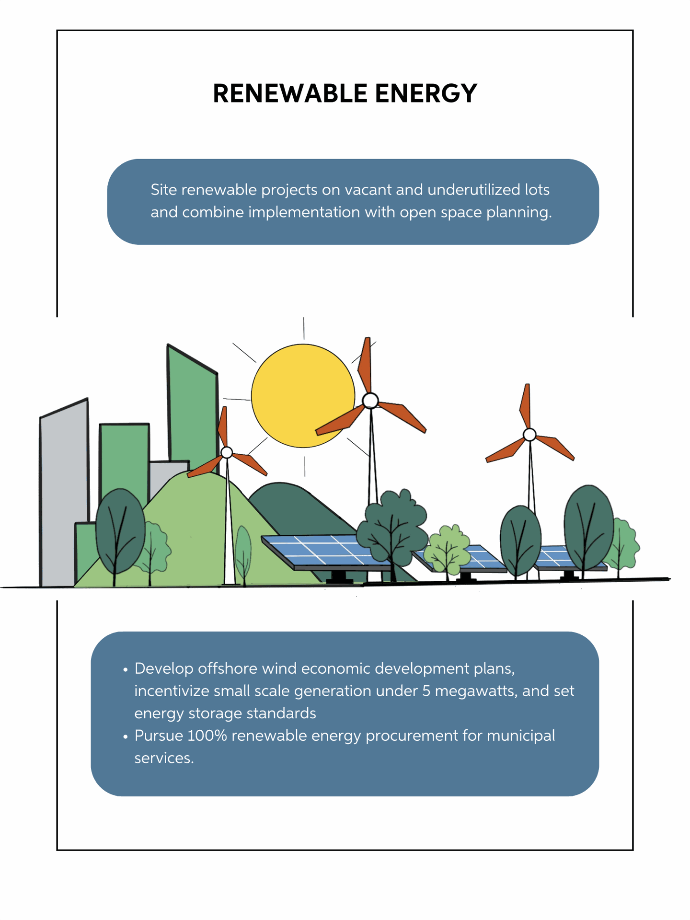
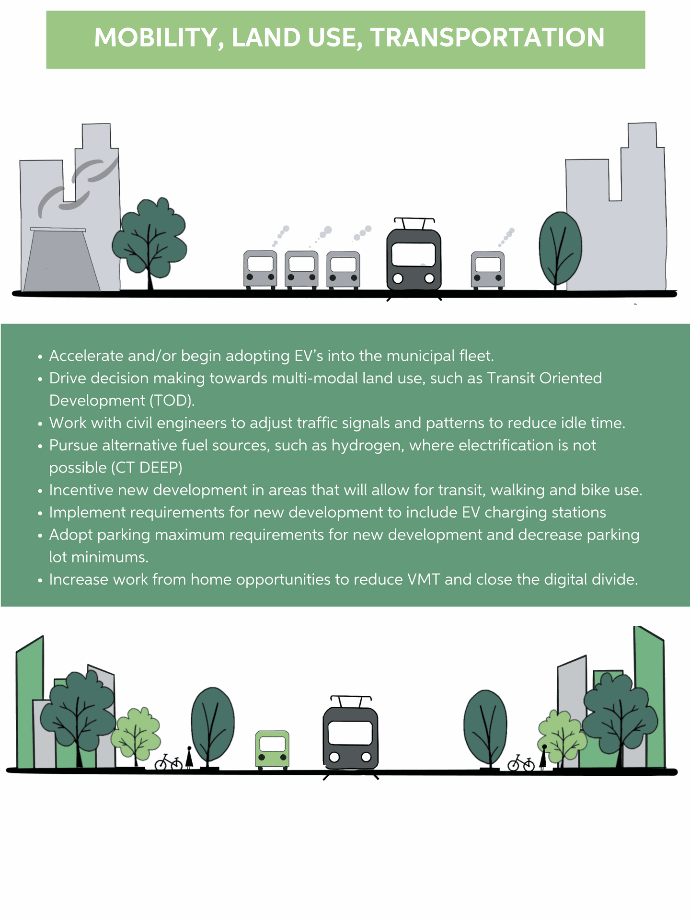
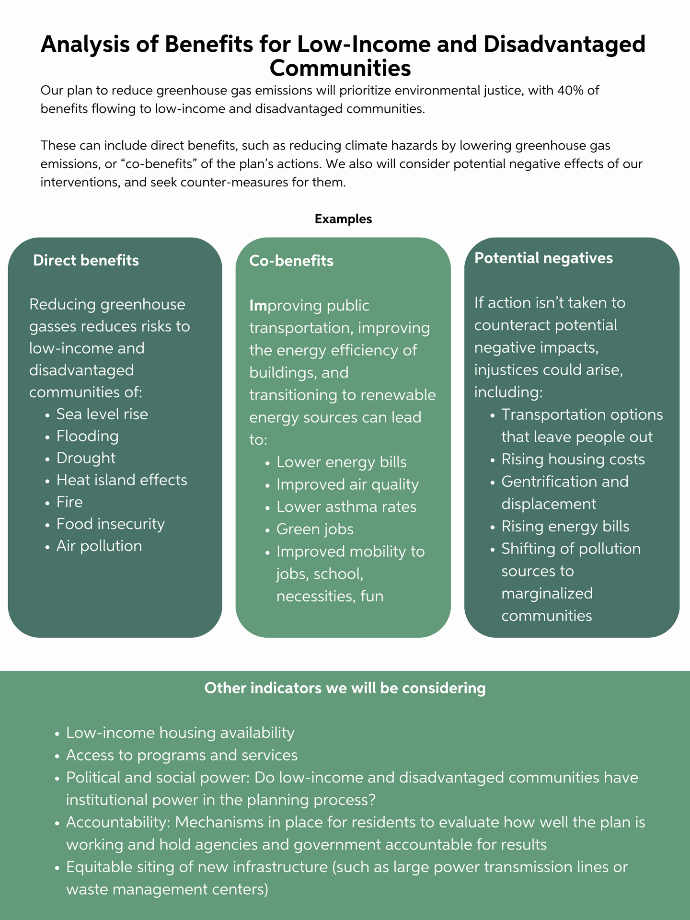
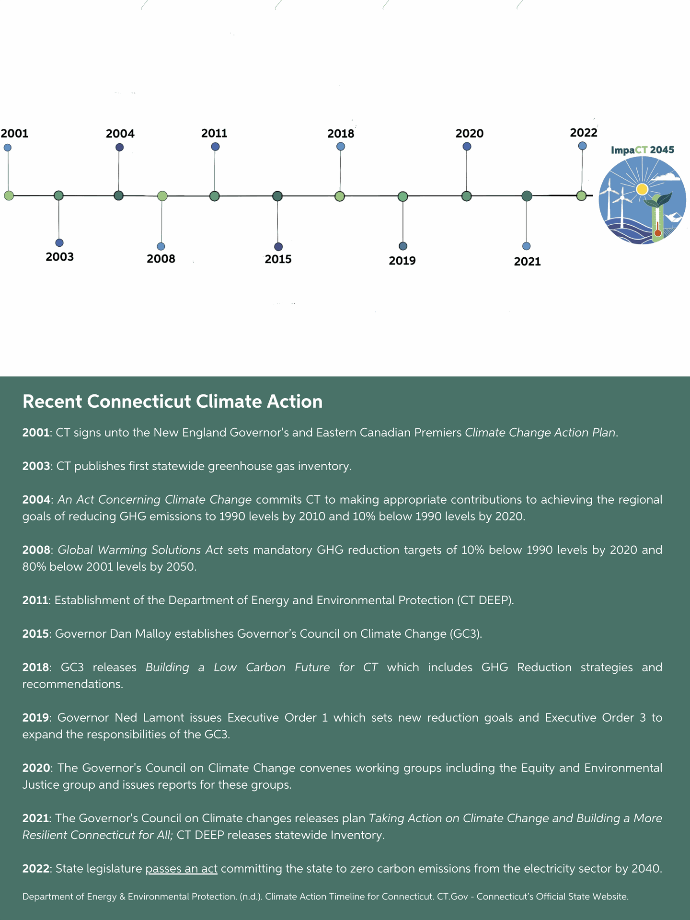
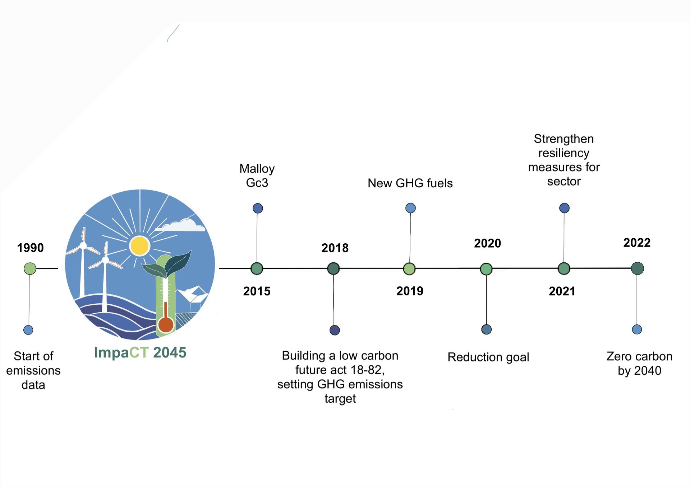
Sector: Mobility and Transportation
Goal 1: A clean and green municipal fleet
T.1 - Accelerate and/or begin adopting EV’s into the municipal fleet, including public school buses.
T.2 - Begin adopting alternate fuel sources such as hydrogen for medium to heavy-duty vehicles where EV transition is not possible.
T.3 - Reduce idling in the municipal fleet; work with civil engineers to adjust traffic signals and patterns to reduce idle time.
Goal 2: Create a transit first approach and reduce spatial misalignment
T.4 - Offer discounted transit fare for LIDACs
T.5 - Create a transit first approach:
- Ensure that opportunity zones are completely accessible via public transit
- Advocate for transit plans that incentivize new development to be transit-oriented and walkable
- Pilot pedestrianization, limited traffic (bus only lanes/streets) and active transportation in dense developments
T.6 - Create more park-and-ride options, and increase transit access and frequency in areas with high car ownership and high commute times to work to enable multi-modal trips.
T.7 - Reduce spatial misalignment:
- conduct feasibility studies to re-zone areas to create economic zones
- make permitting processes for dense housing development easier especially near existing economic zones.
T.8 - Partner with micro-mobility companies to enable cross-town trips for smaller towns nearby
Goal 3: Reduce emissions from private vehicles
T.9 - Increase the over all Electric Vehicle adoption and create infrastructure to support this:
- Educate low and middle-income communities about the benefits of CHEAPR and have limited-time offers of higher Rebate+ to encourage buying of EVs in the short-term
- Encourage car owners in rural communities to set up at home EV charging by taking advantage of Federal Tax credits.
- In high-density development areas, implement requirements for new development to include EV charging stations.
T.10 - Incentivize EVs for shared-mobility companies (Uber/Lyft); this can even include free public parking for such vehicles.
T.11 - Incentivize trip reduction programs in public offices and partner with private offices for the same: this basically requires an increase in work-from-home so that work-commute is reduced.
T.12 - Improve broadband access (with at least 1GBPS) state-wide
T.13 - Pursue alternative fuel sources, such as hydrogen, where electrification is not possible (CT DEEP)
Sector: Electricity Consumption and Production
Goal 1: Reduce electricity consumption from fossil fuel sources in municipal buildings and services
E.1 - Utilize on site renewables (ie. rooftop solar) to power municipal operations
E.2 - If applicable, leverage powers of municipal utilities to procure renewable power, expand electricity production capabilities, and/or invest in storage capabilities within the municipality
E.3 - Increase procurement of renewable energy for municipal services
E.4 - Pursue microgrid projects that integrate onsite renewables and electricity from the grid to power municipal services
E.5 - Increase efficiency of wastewater treatment facilities, utilize onsite solar, or biogas to lower emissions at these facilities
Goal 2: Increase renewable energy production and consumption at the local scale
E.6 - Communicate state and federal level financing programs such as CT Greenbanks Solar for All programs, that support on site renewable generation to consumers.
E.7 - Evaluate the potential of citing renewable energy projects on vacant, underutilized land such as brownfield sites and combine planning for the renewable energy transition with open space planning.
Supporting action - Partner with Community Based Organizations to build out community wide renewable energy projects on these sites.
E.8 - Consider adopting clean energy zoning ordinances that would require new and/or existing buildings to meet certain clean energy milestones through the use of onsite renewables or clean energy purchasing.
E.9 - Coordinate with housing authorities to build out distributed solar projects and microgrids for public housing complexes.
Goal 3: Prepare local economies for renewable energy transition
E.9 - Prepare economic development plans around offshore wind energy.
E.10 - Partner with local workforce development centers, technical schools, and trade unions to prepare workforce in key renewable energy sectors, such as offshore wind energy and
Sector: Waste Management
Goal 1: Reduce organic waste (food, yard scraps, paper) reaching landfill by 80%
WM.1 - Unit-based pricing program: SCRCOG & VRCOG hire 10 coordinators to work with municipalities to implement unit-based pricing program, which includes municipal composting or digesters, providing consumer education, containers, bags, and curbside pickup where feasible, as well as waste stream segregation on city-owned properties. LIDAC focus: *Prioritize programs in LIDACs as first members of program. *Ensure LIDACs make up at least 40% of participating communities. *Provide free or reduced bags and containers to low-income residents. *Work with landlords and housing authorities to provide containers and waste pick-up aligned with the program.
WM. 2 - Alternative to unit-based pricing program (otherwise same as above)
WM.3 - Participate in USDA grant program to reduce food waste https://www.usda.gov/media/press-releases/2023/09/20/usda-expands-efforts-prevent-and-reduce-food-loss-and-waste
Goal 2: Transition from waste-to-energy incinerators to producing energy from biogas
WM.7 - Increase facilities for biogas generation from organic waste. LIDAC focus: Avoid sitting facilities near LIDACs.
Goal 1: Divert waste from landfills and incinerators
W.1.1: Establish a county-wide unit-based pricing program with food scrap collection
W.1.2: Establish a regional waste management authority in New Haven County.
Additional Recommended Strategies
W.1.3: Expand and continue community-based food waste reduction programs.
W.1.4: Advocate for the expansion of Connecticut’s Commercial Organics Law.
Goal 2: Reduce municipal solid waste through state law reducing packaging
W.2.1: Advocate for a statewide extended producer responsibility (EPR) program for packaging.
Sector: Energy efficiency and buildings
Goal 1: Building energy benchmarking and disclosure for existing and new buildings
B.1 - Require building owners to annually benchmark and disclose their energy usage and efficiency ratings
B.2 - Provide educational resources and support to building owners to help them understand and improve energy performance
B.3 - Ensure all municipal operations rely on 100% renewable energy sources
B.4 - Advocate for strict building codes and achieve net zero energy usage.
B.5 - Offer incentives and expedited permitting for projects that achieve green building certifications
Goal 2: Renewable energy access for low income homes
B.6 - Install solar heating on low income housing units o generate clean, renewable energy and reduce electricity costs
B.7 - Develop community solar heating programs that allow low-income residents to benefit from shared solar installations
B.8 - Install energy monitoring and management systems in low-income housing to track and control energy consumption.
Goal 3: Energy efficient building materials and retrofits
B.9 - Support the adoption of sustainable building materials in low income housing construction and renovation
B.10 - Establish a city-wide retrofit program especially for low income and municipal buildings, providing grants and low-interest loans to property owners for energy-efficient upgrades
B.11 - Monitor and report the energy and cost savings resulting from retrofitting and sustainable materials to demonstrate their impact and encourage further investment.
Sector: Industrial
Goal 1: Improve Emissions Monitoring, Accounting and Reporting
I.1 - Require utility companies, gas suppliers, and health care facilities to report emissions data.
Goal 2: Reduce emissions through low-carbon procurement
I.3 - Embed a purchasing criterion in public projects that states a preference for suppliers or service providers who have a transparent and standardized GHG inventory
Goal 3: Reduce emissions from the health care sector
I.4 - Collaborate with the healthcare sector to offer financial grants or subsidies to healthcare facilities that are committed to adopting low-emission practices in specific medical areas. Partner with major healthcare providers to establish a preferential purchasing system, prioritizing suppliers or service providers who disclose their carbon footprint and have clear decarbonization objectives.
Sector: Working Lands and Forestry
Goal 1: Preserve and support existing and potential forested lands
L.1 - Pursue afforestation and reforestation throughout New Haven County
L.2 - Support current efforts and management strategies to maintain existing forests on both private and public property
Goal 2: Increase urban tree canopy (UTC)
L.3 - Increase urban tree canopy in low-income and disadvantaged communities